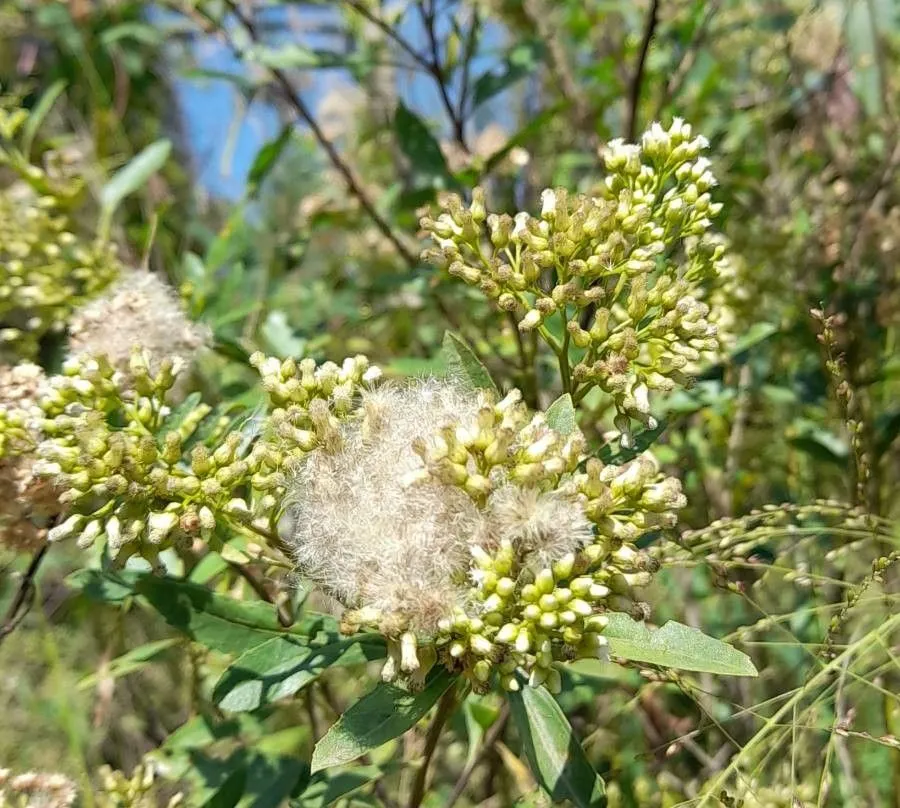
Author: Torr. & A.Gray
Bibliography: Fl. N. Amer. 2: 258 (1842)
Year: 1842
Status: accepted
Rank: species
Genus: Baccharis
Vegetable: False
Observations: U.S.A. to N. Mexico
Emory’s baccharis, known scientifically as Baccharis salicina, is a noteworthy member of the Asteraceae family. First identified and described by the eminent botanists John Torrey and Asa Gray in 1842, this resilient shrub has captured the interest of botanists and plant enthusiasts alike. Detailed in the publication “Flora of North America,” its distinguishing features and adaptability have earned it a unique place in botanical studies.
Native to the regions spanning the United States and northern Mexico, Emory’s baccharis thrives in a variety of environments. Its natural range highlights its resilience and adaptability, contributing to its survival and proliferation in diverse climatic conditions.
The plant itself is characterized by its robust and often shrubby form, typically producing a dense cluster of branches. The leaves of Baccharis salicina are notable for their elongated, narrow shape, suggesting an adaptation to conserve water in the often arid regions it inhabits. During its flowering phase, it showcases a profusion of small, yet visually significant, white blooms that are typical of the Asteraceae family. These blossoms play a crucial role in local ecosystems, providing a vital source of nectar and pollen for various pollinators.
Emory’s baccharis stands out not just for its botanical characteristics but also for its ecological importance. By supporting pollinator populations, it contributes to the health and stability of its native ecosystems. Furthermore, its presence across a broad geographical area underscores its ecological versatility and the role it plays in maintaining plant biodiversity.
Understanding plants like Baccharis salicina gives invaluable insights into the complexity and interconnectedness of natural habitats. It underscores the importance of plant conservation and the need to study and preserve the diverse flora that constitute our natural world.
Eng: emory’s baccharis, emory’s seep-willow, great plains false willow, great plains falsewillow, willow baccharis
En: Emory’s baccharis, Emory’s seep-willow, Great Plains false willow, Great Plains falsewillow, Willow baccharis
Taken Feb 21, 2022 by Johnny Poppyseed (cc-by-sa)
Taken Mar 24, 2021 by Trap Hers (cc-by-sa)
Taken Aug 25, 2022 by mer jury massei (cc-by-sa)
Taken Aug 25, 2022 by mer jury massei (cc-by-sa)
Taken Mar 24, 2021 by Trap Hers (cc-by-sa)
Taken Mar 24, 2021 by Trap Hers (cc-by-sa)
Taken Mar 24, 2021 by Trap Hers (cc-by-sa)
Taken Feb 21, 2022 by Johnny Poppyseed (cc-by-sa)
Taken Aug 25, 2022 by mer jury massei (cc-by-sa)
Growth form>: Multiple Stem
Growth habit>: Shrub
Growth rate>: Rapid
Ph maximum: 8.5
Ph minimum: 7.0
Family: Myrtaceae Author: (F.Muell.) K.D.Hill & L.A.S.Johnson Bibliography: Telopea 6: 402 (1995) Year: 1995 Status:…
Family: Rubiaceae Author: Pierre ex A.Froehner Bibliography: Notizbl. Bot. Gart. Berlin-Dahlem 1: 237 (1897) Year:…
Family: Sapindaceae Author: Koidz. Bibliography: J. Coll. Sci. Imp. Univ. Tokyo 32(1): 38 (1911) Year:…
Family: Asteraceae Author: A.Gray Bibliography: Pacif. Railr. Rep.: 107 (1857) Year: 1857 Status: accepted Rank:…
Family: Fabaceae Author: Medik. Bibliography: Vorles. Churpfälz. Phys.-Ökon. Ges. 2: 398 (1787) Year: 1787 Status:…
Family: Aspleniaceae Author: (Cav.) Alston Bibliography: Bull. Misc. Inform. Kew 1932: 309 (1932) Year: 1932…